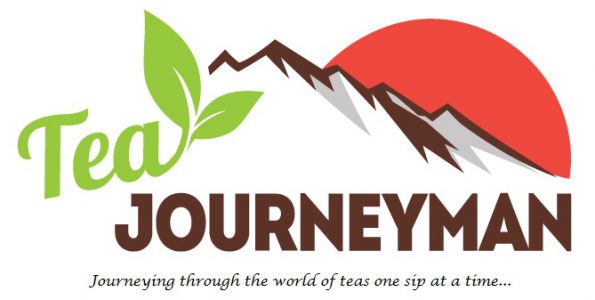On September 30th of 2013, my journey through the world of tea tasting took me to Chi-Lai Mountain, in the Lee Tea Estates in Lugu, Taiwan. This sample of High Mountain Guei Fei Oolong was provided by Easy Tea Hard Choice Co. Ltd. To order your own 25 gram sample of this tea, please visit Easy Tea Hard Choice by clicking here.
This high mountain oolong was grown at elevations over 2,000 feet above sea level. Similar to Oriental Beauty (Bai Hao) oolongs, prior to plucking, the famous leaf hopper insects begin eating the edges of the tea leaves. The tea bushes then produce metabolites that deter the insects. These metabolites break down during processing of the leaves, creating a sweet taste. However, this tea appears quite different than Oriental Beauty, being in semi-ball shapes as opposed to long twisted leaves. The aroma of the dry tea leaves are also lighter and overall different than that of Oriental Beauty.
If the oolong teas from Easy Tea Hard Choice are as good as the black teas in my previous reviews, then I am in for a great experience. Easy Tea Hard Choice helped me realize the potential of black tea. I already have a strong preference for oolongs, so I am interested to see how impressive these oolong teas will be.
With that being said, let the journey begin…
The dry leaves of the High Mountain Guei Fei Oolong are brown to dark brown in color. The leaves are semi-ball rolled and dense, with the average shape of a pea. There is little to no breakage, and no crumbs whatsoever. The leaves appear to be fully intact and still attached to the stem. The aroma is toasty (as in toasted bread), and sweet (most similar to vanilla).
For this sampling, I prepared the tea both using the trial-by-fire and standard preparation methods. I will focus this entry on the standard preparation method, with a brief section dedicated to the trial-by-fire method. For standard preparation, I used filtered tap water heated to 190ºF (88ºC). I used 12 grams of tea leaves for a 32 oz (950 ml) glass tea pot. The leaves were infused for 2 minutes.
The first infusion produced a liquor with a light brown with orange tint, clear, and transparent. The aroma is mostly toasty, with floral (orchid) scents and a touch of honey. The aroma is nicely balanced. The liquor is not quite full bodied, but heavier than a medium body. The texture is very smooth and clean. The taste is mostly floral (orchid), with a nice balancing taste of wood. The aftertaste is lightly floral and sweet, and lingers on the tongue. The taste of this was much different than expected, and there is no negativity in that statement.
For the second infusion, I decided to increase the water temperature slightly to 200ºF (93ºC), and adjusted the infusion time to 1 minute and 30 seconds. The result was a liquor with identical color to the first infusion. The aroma is dominantly toasty, with very light floral scents. The taste is also more woody and toasty than floral, but the floral notes are certainly still there. The aftertaste is floral, and lingers.
For the third infusion, I reduced the water temperature and infusion time to that of the first infusion. The result was a slightly lighter golden-yellow liquor color. The aroma was more floral than toasty. The taste also lost much of the toasty flavor, and the floral notes were more dominant. However, the toasty and woody flavors were strong enough to provide a good balance to the taste. Overall this third infusion was still quite tasteful, and I would expect a fourth infusion to be produce an acceptable. Beyond that, I have doubts.
The infused leaves are fairly uniform dark green, with reddish edges. There are holes in some of the leaves that are very obviously bite marks from the leaf hoppers. The vast majority of leaves are fully intact, most still attached to the stems. There are a few large stems with no leaves attached, but I think that may have been the result of the multiple brewings, not necessarily packaged with bare stems. The stems held from one to three leaves, and some had a nice bud. The structural durability of most of the leaves was quite delicate, indicating that the leaves were near exhaustion. The aroma of the leaves is woodsy with some floral scents.
This was another high quality product from Easy Tea Hard Choice. Their dedication to artisanal tea farmers in Taiwan has been displayed beautifully in all of the four teas that I have sampled from them thus far. This High Mountain Guei Fei oolong tea produced three infusions that each had their own distinct taste profiles, with a fourth infusion being possible. The color and character of the infused leaves is a testament to the careful watch and production of the Lee Tea Estate, as the edges of the leaves are nearly uniform red, and some leaves displaying the bite marks of the leaf hoppers. Again, another great product from Easy Tea Hard Choice. I am looking forward to the next sample.
Thank you for taking your time to read this review. Please leave a comment and start a discussion.





























